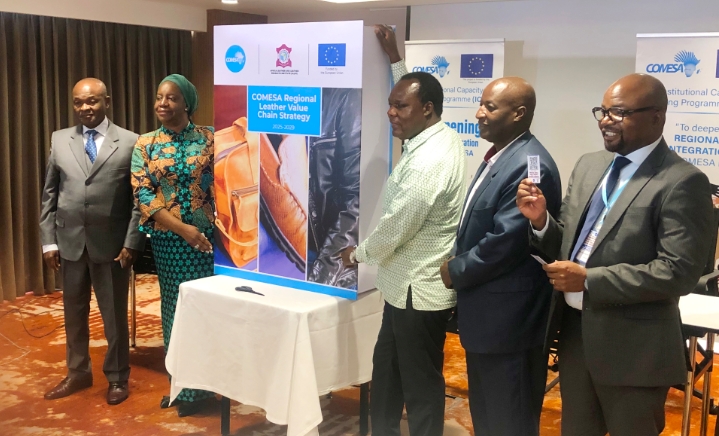In a landmark move to accelerate Africa’s industrialization, the Common Market for Eastern and Southern Africa (COMESA) has unveiled its Leather Value Chain Strategy 2025–2029.
The high-profile launch, held in Nairobi, brought together government officials, development partners, private sector leaders, and delegates from COMESA’s 21 Member States, marking a pivotal moment for the continent’s leather industry.
Hosted by the Government of Kenya, the event underscored the immense potential of the COMESA region, home to 640 million people and a combined Gross Domestic Product (GDP) exceeding USD 1 trillion, to emerge as a global leader in leather production and trade.
A key initiative within the strategy is the establishment of a centralized Trade House to support SMEs in accessing chemicals, accessories, and raw materials addressing critical production and procurement bottlenecks.
Speaking at the event, Principal Secretary (PS) for Industry, Dr. Juma Mukhwana, framed the strategy within the broader context of Africa’s industrial challenges.
Highlighting that Africa, with 17 percent of the global population, contributes less than 3 percent to global manufacturing, he urged African nations to enhance intra-continental trade and shift from exporting raw materials to manufacturing finished goods.
“Somebody is eating our cake,” remarked the PS, stressing the need for Africa to take ownership of its industrial future.
Dr. Mukhwana also underscored the importance of small-scale manufacturing as a catalyst for industrial transformation.
He shared the inspiring story of a young entrepreneur producing quality footwear with basic tools and warned, “Every time you import a finished good, you export a job.”
Concurrently, COMESA Secretary General (SG) Her Excellency Chileshe Kapwepwe led the unveiling, emphasizing that the strategy is more than just a policy document, it is a transformative roadmap to shift the region from being raw material exporters to high-value producers.
The SG noted that while the region exports most of its hides and skins with minimal processing, it simultaneously imports over USD 1.1 billion in footwear annually.
The strategy, she explained, focuses on skills development, SME support, innovation, and sustainability, positioning COMESA to compete globally while creating jobs and strengthening economic resilience.
Additionally, the Africa Leather and Leather Products Institute (ALLPI) Executive Director Nicholas Mudungwe reinforced the need for commitment and collaboration in implementing the strategy, likening the process to marriage, where teamwork and adaptability are essential.
He expressed gratitude to the Government of Kenya, the COMESA Secretariat, the European Union, and the 21 Member States for their contributions to shaping the strategy through inclusive consultations.
Echoing these sentiments, ALLPI Chair Mr. Nobby Macharia described livestock as a valuable but underutilized natural resource.
He emphasized that the value of hides and skins can often surpass that of meat and called for greater awareness of this potential among rural communities.
Meanwhile, former COMESA SG and AU Deputy Chairperson, Mr. Erastus Mwencha, provided historical insights into COMESA’s industrial policy, noting that leather was one of the first three sectors prioritized.
He highlighted Ethiopia’s leadership in leather manufacturing and pointed out that despite Africa’s vast livestock resources, the continent contributes less than 30 percent to the global leather trade.
Investment in design, quality, and innovation, he stressed, is critical to remaining competitive.
Mwencha also reflected on COMESA’s role in building regional institutions like the Trade and Development Bank and the African Trade Insurance Agency, reaffirming the bloc’s commitment to Africa’s industrial future.
During the event, stakeholders were urged to implement the strategy with urgency, collaboration, and dedication as delegates celebrated a shared vision of industrial transformation, unity, and the promise of a stronger, self-reliant Africa.
By Michael Omondi





